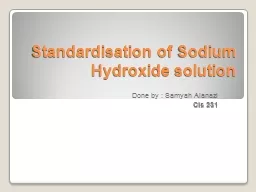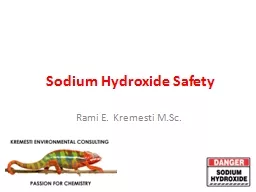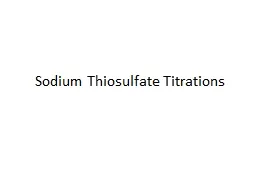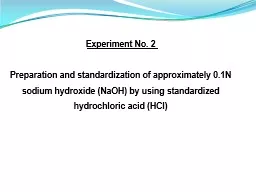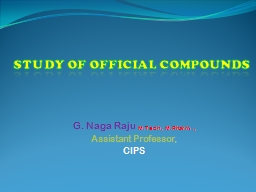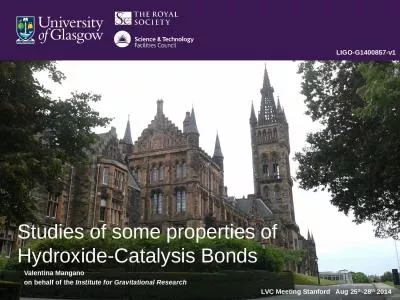PPT-Standardisation of Sodium Hydroxide solution
Author : trish-goza | Published Date : 2016-05-08
Done by Samyah Alanazi Cls 231 Lecture outline What is standardisation Types of standard solutions E experiment objective Types of titration methods Procedure
Presentation Embed Code
Download Presentation
Download Presentation The PPT/PDF document "Standardisation of Sodium Hydroxide solu..." is the property of its rightful owner. Permission is granted to download and print the materials on this website for personal, non-commercial use only, and to display it on your personal computer provided you do not modify the materials and that you retain all copyright notices contained in the materials. By downloading content from our website, you accept the terms of this agreement.
Standardisation of Sodium Hydroxide solution: Transcript
Download Rules Of Document
"Standardisation of Sodium Hydroxide solution"The content belongs to its owner. You may download and print it for personal use, without modification, and keep all copyright notices. By downloading, you agree to these terms.
Related Documents

